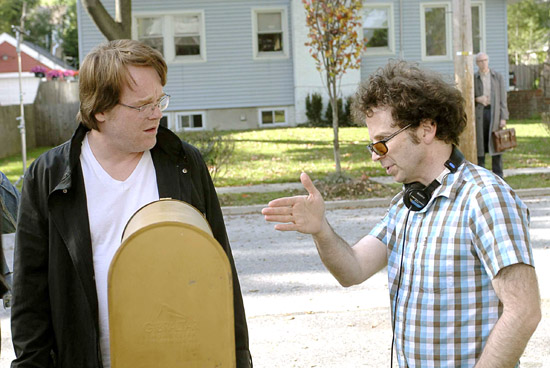Among Hollywood’s so-called “difficult” writers, those who insist upon a level of intellectual effort that isn’t required to understand the human-Na’vi conflict, Charlie Kaufman is perhaps uniquely focused on finding new ways to represent psychological reality. In his most successful films ““ “Being John Malkovich,” “Eternal Sunshine of the Spotless Mind,” “Adaptation” and “Synecdoche, New York” ““ Kaufman often seems to be thinking out loud, on the screen, as he works through his stories.
This Saturday, in the Neuroscience Research Building auditorium, a group of psychoanalysts will be thinking out loud about Kaufman. “Mirrors, Mirrors in the Mind: Reflections on the Films of Charlie Kaufman” is an all-day event, consisting of individual presentations, group discussions and a screening of “Synecdoche, New York,” Kaufman’s most recent film and his directorial debut.
“Most of his films are popular, they’re dreamlike, they’re very rich in ideas,” said Dr. Thomas Brod, an associate clinical professor of psychiatry at the David Geffen School of Medicine, and the creator and moderator of the event. “I knew that this would be a chance for psychoanalysts to really project their own thinking onto a topic that would be of interest to the general educated public.”
Brod said he hopes the event will be a showcase not only for Kaufman’s films but for psychoanalysis as a field, demonstrating the range of ideas that have flowered from the seeds planted by Sigmund Freud roughly a century ago. Dr. Jon Tabakin, for instance, a training and supervising analyst at the Psychoanalytic Center of California, will apply neo-Freudian psychoanalytic theory to “Being John Malkovich,” in which the main character, played by John Cusack, enters a portal into the mind of the actor John Malkovich.
“It was clear to me the psychoanalytic understanding of (“Being John Malkovich”), in terms of what the analyst Melanie Klein calls projectivist identification, the fantasy of projecting yourself into somebody else, which is a ubiquitous fantasy in the unconscious,” Tabakin said. “When (Cusack’s character) goes in the portal, he’s clearly going inside what is really the rectum … it’s all dirty and gooey and he goes right into Malkovich’s mind, which is the way that analysts understand how projection works.
“Projection actually works in terms of anal functions ““ it’s the sort of analogy that we have growing up, thinking about how do we get rid of things we don’t like in ourselves. So the portal through the anus puts us inside Malkovich, and then the movie shows what everybody is trying to do by getting inside of somebody else, because they’re trying to get away from what’s inside of them,” Tabakin said.
Dr. Julia Schwartz, on the other hand, will take an entirely different approach. A training and supervising analyst at the Institute for Contemporary Psychoanalysis in Los Angeles as well as a painter, Schwartz will muse about Kaufman’s representation of what she calls traumatic temporality, the collapse of time and memory in the face of a crisis.
“Being a painter, I see him functioning as an artist, as a painter on film,” Schwartz said.
“I think he brings something to film and something to cinema that is like a painting, which is beyond a linear story or linear film, how stories tend to be fairly linear with time. … His movies don’t do that, and they’re saying something incredibly interesting about human experience.”
Certainly it is not every screenwriter whose work can merit such intellectual scrutiny, but this is not the first time Brod has integrated art with psychoanalysis.
He’s created programs in the past with the Museum of Contemporary Art to analyze the work of the painter Lucian Freud and psychedelic art, and screens films about once a month at the New Center for Psychoanalysis, where he is a faculty member.
He said he sees Kaufman not as a singular kind of writer, but as one of a small group of filmmakers, such as Woody Allen and Pedro Almodovar, who warrant extensive analysis.
“Looking at the six films that he has written, I don’t see him presenting a picture of somebody who is actually psychoanalytically based,” Brod said. “His picture of the unconscious tends to be limited to the pain of loneliness and the pain of shame, which is very important, but most of his pictures of what is unconscious are buried aspects of people’s lives that are shameful.”
It’s a dark subject for a writer to dwell upon, and Schwartz said she believes that more fearful or defensive viewers may retreat from the harsh realities of Kaufman’s films. In an age when the sentimental overload of Nicholas Sparks and the sensory overload of 3-D movies rule the box office, the fact that a writer such as Kaufman has made enough films to fill a day of lectures is itself a puzzle.
“In the midst of “˜Star Wars’ to “˜Spiderman’ to “˜Iron Man,’ how did this guy get a movie made?” asked Tabakin. “It’s amazing.”
